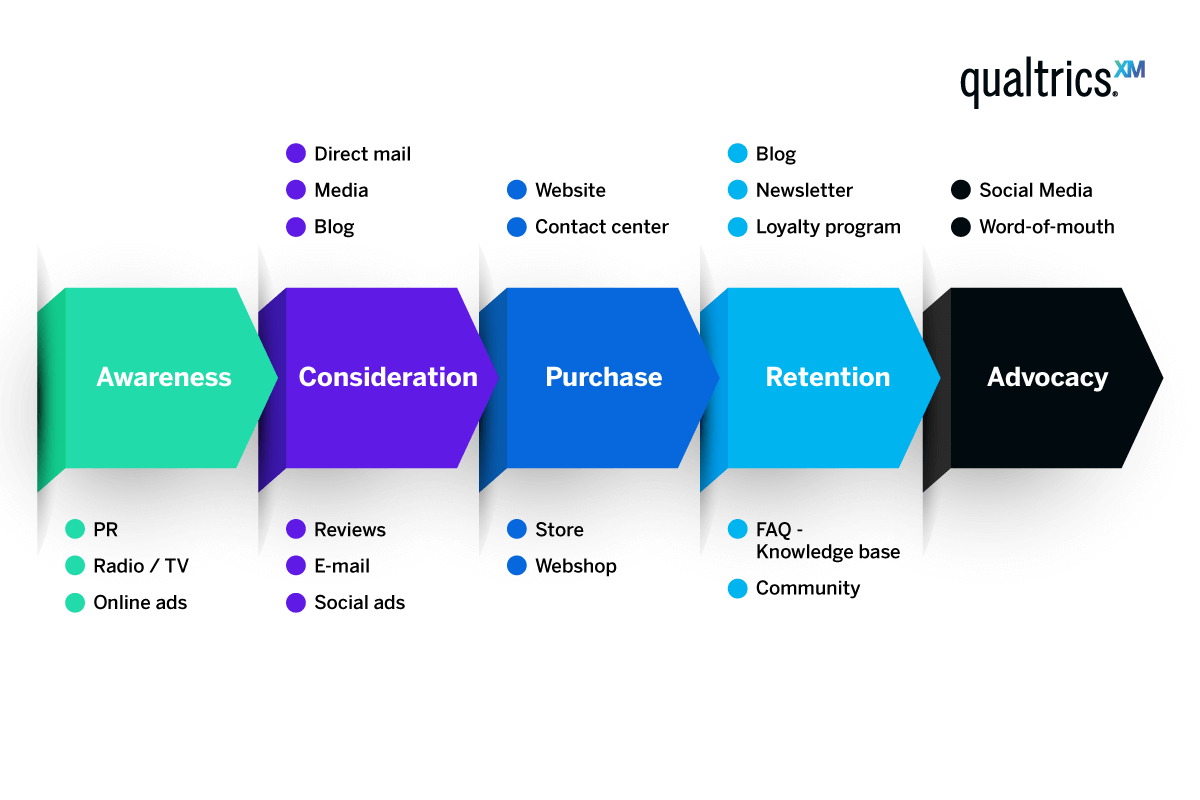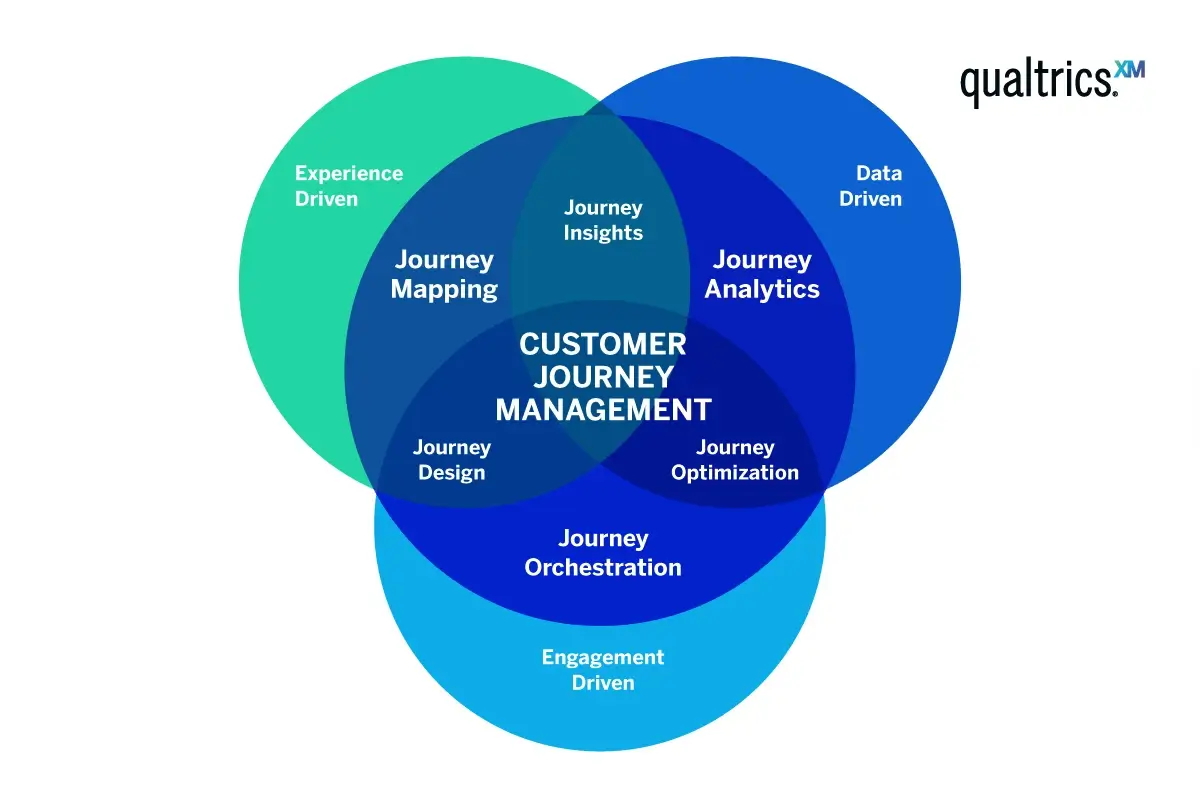The interactions your customers have with you are never one-off moments, and they don’t happen in a vacuum. Instead, they form part of an overarching customer journey, which incorporates every single stage of each customer’s road to purchase – and beyond.
Understanding those customer journeys, and building experiences with every step in mind, is how you’ll create interactions that people love, remember, and recommend.
Delivering on those next-level customer journeys requires a deep understanding of how people discover your brand and buy your products, and that means working on a few core practices:
- Customer journey mapping
- Customer journey orchestration
- Customer journey optimization
- Customer journey analytics
In this article, we’ll be going through the what, why, and how of customer journey management – as well as what mastering it will mean for your customers.
Deliver next-level customer journeys with Customer Journey Optimizer
What is customer journey management?
Customer journey management is the art of being able to understand, map, design, and improve the interactions and processes that make up the entire customer experience.
It’s a discipline stemming from the idea that no matter how a customer interacts with your brand, that interaction is one part of a larger journey and not just an individual event.
It doesn’t matter if a customer is actively researching your products, passively encountering a social media post, browsing in a physical store, or contacting customer support – whatever the interaction, it’s happening as part of an overall journey.
Managing that journey really just means making those isolated moments better, but also ensuring that they’re interconnected and aligned.
When exploring and visualizing customer journey data, we are assessing:
- Customer behavior
What is your customer trying to do? - Customer attitudes
What is your customer feeling/saying? - The on-stage experience
Who/what is your customer directly interacting with? (This includes various channels, such as TV ads or social media) - The off-stage experience
Who/what needs to be in place but which your customer is NOT directly aware of?
The purpose of customer journey management is ultimately to finetune the customer experience until it’s as seamless as possible, that the path towards purchase is frictionless, and that each touchpoint works as part of a broader CX strategy.
Successfully managing customer journeys, then, requires that you can master a mixture of customer data, behavioral science, customer feedback, industry insight, and a dash of business instinct.
Customer journey management: A mindset shift
Building customer journey management processes into your business requires a mindset shift. It’s not something that you can do once and forget about, and nor is it something that’s a quick change. That’s because customer journey management is a multi-faceted task that asks a little bit of every department.

Instead of siloed teams looking after their individual touchpoints or KPIs, true customer journey management needs to have an omnichannel focus. You’ll need to work across departments to deliver more a seamless customer experience no matter how your customers choose to interact with you.
Customer journey management is about pooling your resources to answer the following questions:
- What journeys are your different customer segments taking?
- Are customers able to get the answers and solutions they need?
- Can you track and pinpoint where experience gaps lie?
- How can you work to proactively fix those pain points?
- Are you able to monitor the results of those changes?
Customer expectations are higher than ever, and people are much more careful with where they spend their hard-earned money. So it’s vital to be able to offer them journeys that offer zero resistance.
In that sense, customer journey management needs full company buy-in. It’s top-down, as well as bottom-up – where customer journey data informs both individual channels as well as your overarching business strategy.
The benefits of customer journey management
There are two core benefits to customer journey management: stronger business outcomes, and a better customer experience. But you needn’t just take our word for it; there’s strong evidence for both.
PwC, for example, cites that 65% of consumers are likely to become long-term customers if the entire customer journey offers a positive experience, while some 86% will leave a brand after two poor interactions, according to Emplifi. In fact, that same research says that 49% of consumers have done just that, with poor customer experience being the key driver of churn.
From a business outcomes perspective, there are plenty of reasons to ensure that your customer journeys are as polished as possible. Customer journey management means being able to offer customers a more personalized experience, for example, which is a great way to grow an audience of loyal customers.
Some 60% of consumers will become repeat buyers if the experience on offer is a personalized one, and 66% are willing to share personal data if it helps them get that. That shows an appetite for journeys that work better on an individual level. In our own 2022 research, we found that:
- 63% of consumers said companies need to get better at listening to their feedback
- 62% of consumers said that businesses need to care more about them
- 60% of consumers would buy more if businesses treated them better
And then there’s the fact that orchestrating and fine-tuning the customer journey will result in a stronger omnichannel experience – which also boosts sales. Omnisend research found that omnichannel campaigns and experiences can drive as much as 494% more orders than single-channel ones.

If you remember nothing else, remember this: customer journey management is an incredibly worthwhile practice to build into your business for three main reasons:
1. You become more customer-focused
Customer journey management is about putting your customers at the forefront of your business practices and processes.
2. You can offer more personalized experiences
You’ll know more about what makes your customers tick, which will let you tailor your offering to them in a more bespoke way.
3. You’ll break down siloes
Customer journey management requires total transparency and teams that talk regularly to one another.
The building blocks of customer journey management

Ok, so how do you put all this into practice? Customer journey management is really an overarching term for three processes that work together to help you identify what your target audience is up to, learn how you can better serve them, spot where things need to be improved, and monitor the success of your actions.
Let’s take a look at each part of the customer journey management framework:
Customer journey mapping
A customer journey map is a theoretical version of the steps a customer persona or segment will take to achieve what they’re trying to do. That might be making their first purchase, making a repeat purchase, or seeking customer support.
The idea, then, is to create multiple customer journey maps for all of these different experiences and list out the steps and touchpoints along the way. This’ll give you an idea of the various processes that take place in any given journey.
You’ll normally create these maps as a team, as part of a journey mapping workshop. There are two stages here: defining your audience personas and outlining their various journeys.
Fo audience personas, you’re really asking who your customers are. What’s their age and location? What do they do for a living? What’s their family status? And what are their goals in relation to your product?
Their journeys can be understood by answering a series of behavioral questions. Who’s involved in the journey? What are the processes and stages? What does the customer think during these stages? What’s the greatest moment of emotional load? What are your customer needs at this moment? How do their needs change if this experience goes badly?
For the most part, this is an experience-driven process, rather than a data-driven one – in that your team should be able to create a customer journey map for a range of customer journeys based on instinct and understanding. These assumptions can then be tested by asking customers as part of your workshopping process.
Need more info? We’ve got a full guide to customer journey mapping here.
Customer journey orchestration and optimization
Once you know what your customer journeys look like, you can think about how to design ones that work best. If your customer journey mapping is a top-level exercise, then customer journey orchestration and optimization are more practical. These use customer data and a cross-team approach to ensure that customers can move from touchpoint to touchpoint smoothly.
Customer journey orchestration
Customer journey orchestration often relies on a dedicated team made up of marketing, product, and service personnel, who can work together to create more compelling journeys.
Imagine, for example, that you a customer has recently installed your SaaS tool, but now they’re experiencing an issue. Your customer service team will naturally spring into action here, but great customer journey orchestration would also mean that other teams know what’s happening.

Your marketing team, for instance, would know not to bombard that customer with collateral about how great the product is until their issue has been fixed. The product team, meanwhile, would know about the issue the customer is facing and would be proactively working to ensure that the issue doesn’t arise for anyone else.
In other words, orchestration is about designing processes that can be standardized as a ‘best practice’ framework for each and every customer journey.
Customer journey analytics
While instinct and some level of customer insight will help you map out a range of customer journeys, the ability to orchestrate and optimize things relies on access to customer data.
Customer experience management software is the answer here. The right customer journey management tools can provide masses of insight into the customer experience, help you track KPIs, and offer areas for improvement.

This information can come from a variety of sources. Customer behavior tracking can be baked right into digital products and work across platforms to help you better understand their journeys, while AI and natural language processing can listen to and understand customer effort, intent, and sentiment.
When it comes to customer journey management, software like this can help you:
- Audit journeys you think are happening
- Find ones you didn’t realize were happening
- Hear customer feedback from every touchpoint
- Understand where things need to change
- Measure the success of those change tactics
Information like this, both real-time and historical, can not only help you monitor the success of your customer journey management efforts but also provide a list of next steps to try, in order to attain better business outcomes.
Because of that, you can think of journey analytics as the engine behind an effective customer journey management approach.
Customer behavior: Bringing it all together
The three-part customer journey management framework is really a series of overlapping processes. Mapping informs orchestration and orchestration informs optimization, but the right analytics and data can inform all three.
So, in order to drive your desired business outcomes, you need to adopt the right tools. Customer experience management platforms, like the one offered by Qualtrics, can help you figure out what your customers are doing, saying, and thinking – and why.

That information, alongside a much deeper understanding of who your customers actually are, can help you build personalized customer experiences that allow people to effortlessly float from touchpoint to touchpoint in a way that feels tailored to them.
Qualtrics XM for Customer Experience has been designed to turn customers into fans. It allows you to hear every customer’s voice, fix every broken experience, and increase customer loyalty and spend.
Deliver next-level customer journeys with Qualtrics